#terrarium books
Explore tagged Tumblr posts
Text
One of my favorite introductions to terrarium pets, is the Digest for the Successful Terrarium from 1989, penned by Richard D. Bartlett for the Tetra Press imprint. Bartlett is a prolific author in the field of exotic animal care in the home, and Tetra Press is, of course, the print media imprint of the aquarium products manufacturer, Tetra. Who pimp their own produce throughout, what is in my humble opinion, one of the better introductions to reptile and amphibian care for lay amateurs.
Since I have started this aquarium related blog, I have pondered creating content about terrarium pets as well. I have certainly cared for all the traditional 'orders' of reptiles except the tuataras, and all three 'orders' of amphibians, as well as tarantulas, scorpions, land crabs and other arthropods. But I stick so far to coverage of aquatic and amphibious fauna, as related to the terrarium. Small though it is, the Digest feels most focused on aquatic and amphibious 'herps' - interestingly, no arthropods are featured - with the desert reptiles occupying only a minority of the pages.

People forget often that the commonly used word 'aquarium', actually started as short for an 'aquatic terrarium' - though arguably this is a inaccurate etymology, when aquaria have no terrestrial area. In any case the word has been with us since the Victorians, who made aquarium ownership fashionable.
Between the terrarium and the aquarium, exists the paludarium, riparium, or aquaterrarium. Or as Bartlett labels them, the semi-aquatic terrarium. Very often people without experience or naturalists knowledge, feel inspired to start a paludarium system, especially one with a waterfall and maybe a fog machine. Unfortunately these plans usually fail for elementary reasons.
Bartlett also discusses the 'turtle aquarium' by which he means a standard aquarium with a low water level, and decor arranged so that amphibious turtles may emerse themselves and bask. Correctly he mentions that adult turtles of many freshwater species, outgrow standard aquarium sizes and require something more like a garden or greenhouse pond.

The pages on aquarium denizens are brief introductions, accompanied as one would expect, by photographic imagery. Most of the aquatic species featured are, predictably, amphibians such as aquatic caecilians, sirens and amphiumas or 'congo eels', and pipid frogs.
Hymenochirus is introduced as distinct from the related but larger Xenopus, with which it was and is often confused. Bartlett writes boldly that Hymenochirus are too small to be dangerous to most (presumably adult) fishes. Be that as it may, there have been incidents of predation attempts on fishes, and I have seen one individual choked to death after misjudging an Otocinclus catfish as potential prey
Oddly the North American newt genus Notophthalmus is treated as an aquatic salamander, whereas the Asian genus Cynops is listed as semi-aquatic a few pages later. The reasoning is a curious piece of false information, because both genera are well suited to aquarium and aquaterrarium environments. I suspect that during editing, Bartlett confused text about Taricha rivularis with that about Cynops pyrrhogaster. (Though most newts traded are C. orientalis.)
Bartlett features genus Bombina as aquatic amphibians, whilst conceding they aren't strictly aquatic at all. Why? Because they will sit happily of floating plants such as water sprite. Curiously he claims that contact with Bombina sp. is toxic to all other amphibian species, although their wild toxicity actually depends on what prey is in their diet.
Beyond the expected featuring of a few turtle species, together with nodding his head to an old panic about salmonellosis, Bartlett also includes within his pages, a few aquatic and amphibious squamates. It was in fact rare then, to see much thought given to the file snake genus, Acrochordus, as aquarium inhabitants.
When they were featured in pet reptile texts, Acrochordus sp. were surrounded by wrongful information, such as their supposed requirement for live prey. In fact file snakes are well documented to consume fish carrion in the wild.
A. javanicus, however, is not physiologically adapted to life in saltwater, as is suggested by Bartlett. There is a congeneric species, A. granulatus, that is native to mangrove swamps and other coastal habitats, and has become physiologically adapted to excreting excess salt through oral salt glands.
This innovation is parallel to that of other marine snake clades, and independently qualifies them as true sea reptiles, in combination with their strongly aquatic lifestyle, and membership in aquatic food webs. Bartlett correctly points out that most 'aquatic' snakes are in fact amphibious, and they must be cared for as such, in an appropriately semi-aquatic environment

Moving from the aquarium to the aquaterrarium, Bartlett features the genus Tylotriton as the emperor or mandarin newts, although this genus is not a member of the newt subclade of salamanders. The brief entry is memorable, unfortunately, for its misinformation about their lifestyles.
Unlike the smaller true newt Cynops, which Bartlett suggests as a model for Tylotriton care, Tylotriton is a more terrestrial animal. Although they can and do feed in newt style, by suction, when they are in the water. While Tylotriton sp. are apt for the amphibious terrarium, they are not suitable for the aquarium, unlike the popular Cynops sp.
Also recommended by Bartlett for the semi-aquatic terrarium, are the stunning tiger salamander, Ambystoma tigrinum, and fire salamander, Salamandra salamandra. Both species need no more than a water dish in which they can almost submerge, but which they must also be easily able to exit.
For example, it's sides must not be too smooth and slippery, if these land animals might drown due to depth. Truth be told, adults of Salamandra and Ambystoma are terrestrial animals, and it is not really appropriate to view them as semi-aquatic species. Whereas curiously Bartlett omits to introduce us to those popular, aquatic relatives of Tylotriton, the sharp-ribbed newts of genus Pleurodeles.

Curiously given that Bartlett does not mention large freshwater turtles such as New World snapping turtles, on the grounds that they outgrow aquariums, he does feature a mid-sized crocodilian, the spectacled caiman. A reasoning might be popular demand, since they were common in US pet stores at the time. But a similar argument would have justified the inclusion of certain big, freshwater turtles most commonly traded.
Despite its popularity in the pet reptile trade, the spectacled caiman, Caiman crocodylus, is not at all the smallest crocodilian species. Pet spectacled caimans will eventually require a room-sized terrarium with a suitably large and conveniently drainable pool, complete with a plug and hidden plumbing. Accommodating even the smaller sized dwarf caimans (Palaeosuchus sp.) and dwarf crocodiles (Osteolaemus sp.) would require a room sized environment

A room sized, zoo style enclosure also best befits the basilisks or Jesus Christ lizards, genus Basiliscus, which are relatives of the chameleons and the herbivorous iguanas. In their case the reason is their skittish nature, especially if they are placed in new, unfamiliar surroundings.
Basilisks can fortunately share this space with other species, and for this reason are popular in zoo mixed exhibits. I have seen them share happily with matamata turtles, river stingrays, and other South American freshwater life. The basilisk uses the space overhead whilst fish and other water animals use the space submerged. Yet their large mouths enable them to consume various smaller animals as prey.
Although they are not really amphibious, juvenile basilisks are apt denizens for the spacious aquaterrarium, alongside turtles and other animals they will not think are prey. Their habit is to sit upon branches, so they will not conflict often with aquatic or terrestrial animals of similar size
Basilisks, sailfin lizards, and water dragons live by the waterside, and escape threats by diving into the water. Although their 'prehistoric' sails might resemble the dorsal fins of fishes, they actually limit the swimming of these lizards because,unlike the dermal skeletons of fish fins, they are dorsal processes of the vertebrae and extensive musculature is attached to their bases, holding their backbones relatively rigid.
Basilisks are also famous for the peculiar behavior, of running bipedally on the water surface to escape their own predators. A behavior that is not only unexpected and surreal, but evokes mighty Mesozoic dinosaurs in the imagination. Such evasive measures are not unique to basilisks among the lizards, but it is unusual enough to make them famous for it.
Another page features the anguimorph genus Shinisaurus, then a singular species but now recognized as a species complex. These, again, are lizards that live by the waterside and consume mainly terrestrial prey. When they are disturbed, Shinisaurus will take refuge in the water they live beside. A tendency in zoos today, is to cohabit Shinisaurus with salamanders of the aforementioned genus Tylotriton.

What book featuring forest terrariums, would be complete without at least one of the dart frogs? Famous for the high toxicity of certain Phyllobates species, it is actually their beauty, small size, and peaceful dispositions, that give them appeal to the amphibian fancier. It is possible to cohabit a few species of dart frogs together, in a suitably sized rainforest terrarium.
They might share with other amphibians, small lizards, and in an amphibious setting, diminutive fishes. Yet although they can swim, they do not swim well, and must be considered as land animals. By this I mean that any aquatic zone in their aquaterrarium must be calculated entirely additional to their own spatial demands.
And it must be easy for them to leave the water once they go in, ideally due to a gentle gradient of substrate. The water depth need only be shallow, and ideally it should not be very deep. This problematises the idea of cohabiting dart frogs with numerous schooling fishes, such as tetras.

A number of small, pretty lizards turn up in the pet trade, such as day geckos and anoles. Not requiring much space in captivity, they are in some demand as terrarium pets. Often people attempt to house them in amphibious terrariums, and this can work out well indeed, although they do not habitually swim and must easily be able to leave any water zone.
The key to their appropriateness,and that of arboreal frogs, is that they live above the ground and water level, on the walls and sides of their home, or on wood decor. This means that their spatial needs do not inherently compete with those of the aquatic denizens, as do those of ground living reptiles and frogs.
However their excretions will enter the water below through the force of gravity, thus creating strain on the biological filtration, and lowering it's carrying capacity for fish and other aquatic animals. Live foods will also drown, or otherwise end up decomposing in the water. Where possible, lizards in such settings should be adjusted to consuming non-living prey.
Phelsuma sp. are of interest in this regard, because of their readiness to consume soft fruits, and artificially mixed nectar substitutes. Although all of the day geckos consume animal prey, they are particularly easy to get to accept dried foods, by associating them with sweet, fruity items.
Much the same may be said of arboreal frogs, as of small, arboreal lizards. Although it makes feeding time a little more time consuming, it is possible to feed frogs with non-moving items using tweezers. The benefit of taking time to do this, is again that unconsumed food will not end up in the aquarium water.
Many frogs are reluctant to eat dead food that is not wriggled, because motion helps them to judge the size and number of food items. This doesn't mean they are unable to see objects that aren't moving, only that they are hardwired by evolution to see motion as tasty. As indeed so some salamanders.

Snakes are not the animals on people's minds, when people think about insectivorous reptiles. Yet North America has a number of snake species that consume non-vertebrate prey animals. Most often encountered of these in the pet trade, are the green snakes of the genus Opheodrys.
Strangely Bartlett presents another genus of 'small woodland snake', Diadophis, as such an insectivore. Au contraire, snakes of this genus are known to also consume salamanders and other small tetrapods, including the juveniles of other snake species. Compared to other works of Bartlett's, the text of this Digest contains some strange and unbecoming errors.
Right after this curious misinformation, the text moves into the desert terrarium, home of species from xeric lands, such as leopard geckos, collared lizards, and chuckwallas. For reasons of humidity in a small space, such species cannot really be housed in the aquaterrarium. Although of course, they are fascinating animals in their own right. In my view, desert animals and plants are less suited to the glass terrarium, due to issues of humidity and ventilation.

Following the introduction to the xeric terrarium, comes an introduction to vivaria with sliding doors. Although people often assume a paludarium requires a production line fish tank, because it contains water, there are obvious benefits to a custom built, sliding door design. Sliding doors make the environment inside more accessible to its caretaker, and less opportunity for escape is presented to climbing animals, than when lifting the lid.
Just as certain fish and turtles may be housed in outdoor ponds, so too can terrestrial reptiles and amphibians, be accommodated in an outside reptiliary, climate permitting. (Or a fernery, as Bartlett calls it ) He only mentions this in passing, however, and he doesn't mention the possibility of outdoors tropical houses and heated greenhouses, as are built or converted and maintained by bird and butterfly enthusiasts

#out of print books#terrarium books#richard d. bartlett#digest for the successful terrarium#herps#1989#terrarium pets#reptile care#amphibian care#tetra press#exotic pets
0 notes
Text

morning light
#the cutiepies#farcille#dunmeshi#lowkey like the lineart only more than the coloured version but its okay#marcille donato#falin touden#dungeon meshi#delicious in dungeon#argh#falin has a bug terrarium and plants and marcille has books held by hand sculptures#entire piece inspired by my hand shaped bookend
4K notes
·
View notes
Text



he is soooo normal
#why that sign???? why bill#putting him in my terrarium#there is something so wrong with you bbygirl#book of bill spoilers#flaptopfuture
60 notes
·
View notes
Text
man. is there any feeling more frustrating than needing a creative outlet for all the different ideas gambolling around like baby gazelles in your brain (or spinning like they're plates balanced on those sticks street performers use) but the 'function' part of your 'executive function' is, you know. not functioning.
i'm so mad about it because i had SUCH a good executive function day yesterday! i got so much done, both at work and around the house! now i'm back to being a bitchy potato! what the cinnamon toast fuck.
#i want to write! or read a book! or maybe make another little moss terrarium!#'okay then go do those things' what if i curse you with bad hair for the next two weeks#ray.txt#i hate my damn adhd but i don't even think it's fully to blame for this#like it has to be equal parts adhd + burnout from work + the global horrors + maybe my fun new heart condition#(it is a largely benign condition but it does explain some things)
30 notes
·
View notes
Text
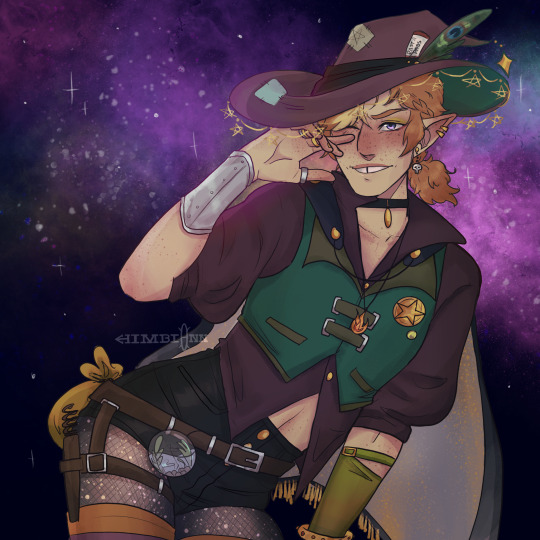
My personal take on the gender boy(ish) Taako! ✨
Everyone thank my partner for getting me into TAZ finally LMAOO

Character sheet! I like the idea of his fashion style being the equivalent of peacock barf. He’s a walking fashion disaster icon.
#taz balance#taz#the adventure zone taako#taako taaco#taako from tv#taako fanart#i do also plan on cosplaying him#I will have most if not all of his things#the satchel for books and stuff is for my convenience#also Imma have so much iridescent fabric and glitter#pocket spa being a little terrarium#RAAAAH#I wasn’t surprised that I latched onto this boy cause so many people said I would be him#he’s bard coded without being a bard#Ty Justin for creating such a icon
300 notes
·
View notes
Text
All set up at a Scifi Valley Con Fall edition! You can find Painting Dragon Feathers on the lower level at booth P1 for all kinds of creature art, charity Con-Quests, and I’ll be giving panels Friday and Saturday. Stop by and say hi!
#convention #dealer #artistalley #paintingdragonfeathers #artist #fanart #artistlife #con #writer #diorama #pokemon #pokeball #pokeballterrarium #art #craft #terrarium #legendsofarceus #pokemonscarlet #pokemonviolet #pokemongo #pogo #gengar #mimikyu #umbreon #shiny #shinyumbreon #scifivalleycon #scifivalleyconfall2024
#paintingdragonfeathers#art#illustration#fantasy#terrarium#pokemon#diorama#figure#dragon#artist alley#indie artist#indie publishing#cryptozoo#cryptozoology#CryptoZoo book#fanart#con#convention#dealer#writer#indie writer#craft#Pokeball#Pokeball terrarium#fossil#dinosaur#cryptid#cryptids#scifi valley con#scifi valley con fall 2024
21 notes
·
View notes
Text

Terrarium Lights by @larissa-the-scribe
An older lady finds a ghost in her garden, with no memories of who he is or where he came from, and together they set out to find the answers.
I made a mock book cover! If you'd like to read it you can find it here on Tumblr!
Alternate versions below cut


#digital#color#mock book cover#terrarium lights#august sketch#my art#artists on tumblr#salt and light
17 notes
·
View notes
Text
Day 375: Reptile

link
–This image is part of the public domain, meaning you can do anything you want with it! (you could even sell it as a shirt, poster or whatever, no need to credit it!)–
#public domain#art#copyright#free art#open source#flickr#flickblr#creative commons#no copyright#verkade-album#bookillustration#Jac.C Koeman#1930#book illustration#1930s#30s#illustration#illustrative art#old illustration#lizard#reptile#terrarium
10 notes
·
View notes
Photo
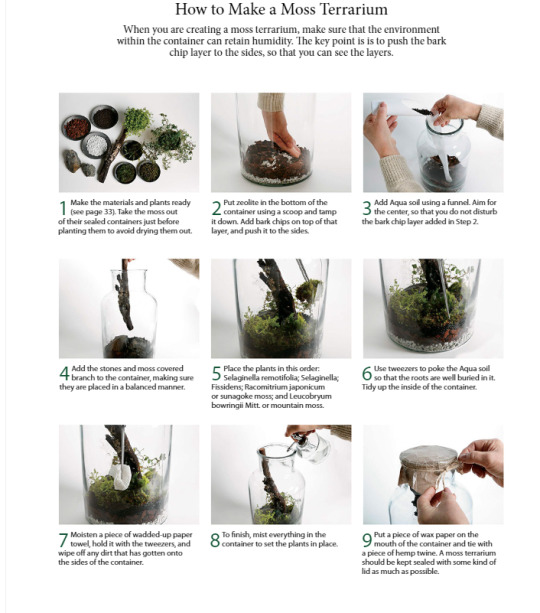
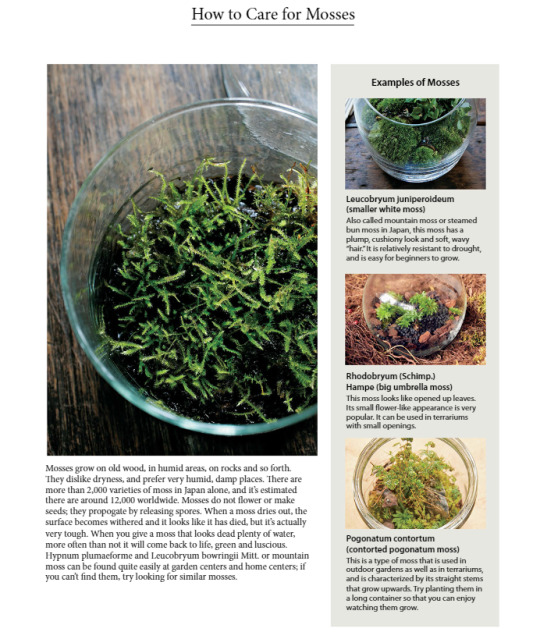
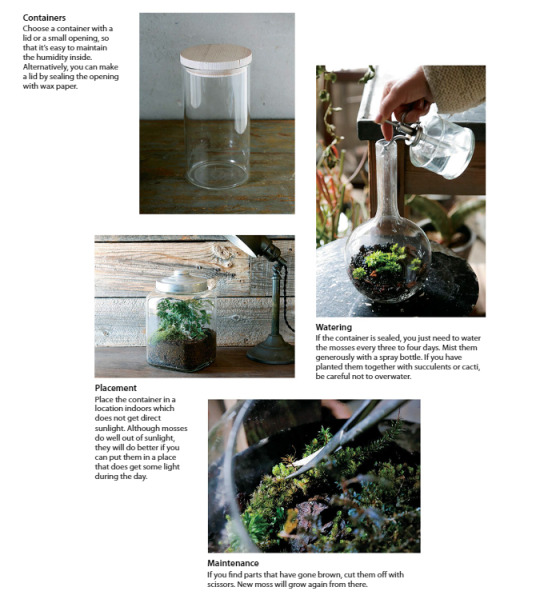
From A Beginner’s Guide to Terrarium Gardening by Sueko Katsuji, Motoko Suzuki, Kazuto Kihara, Yuya Ohyama
89 notes
·
View notes
Text
Finally read Ryoko Kui's Terrarium in a Drawer and it's hilariously funny. I think it's a collection of even shorter stories than The Dragon's School, and it's a real master class in setting up and delivering a punchline in no more than two pages. There were some chapters longer than that, but even the more fleshed out ones had that same rhythm. A few of the longer stories even had a bonus two-pager that turned it into something totally different without detracting from the first ending at all, which was very impressive. The last story even had a callback to the first one that totally knocked me out. Fantastic collection
8 notes
·
View notes
Text
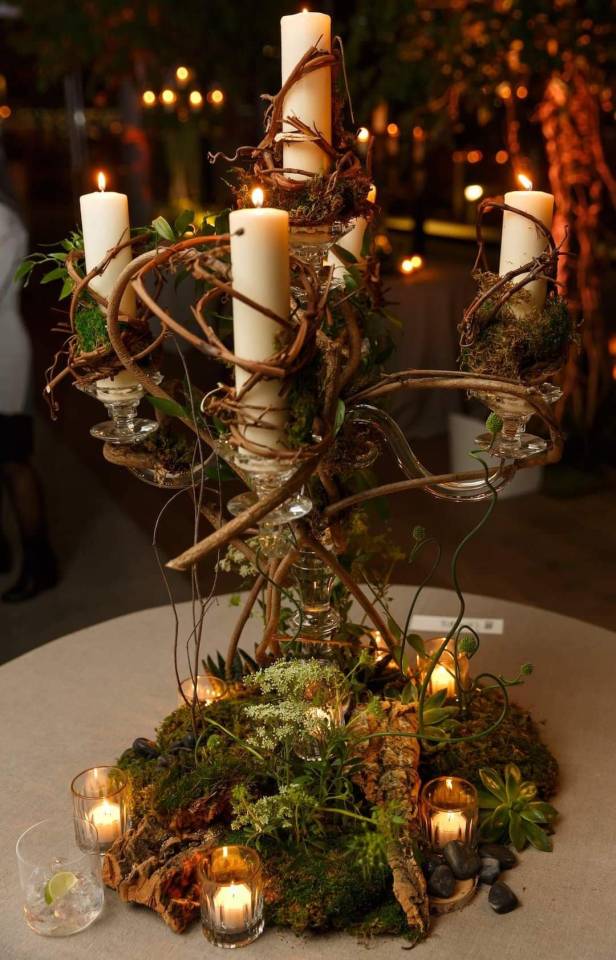
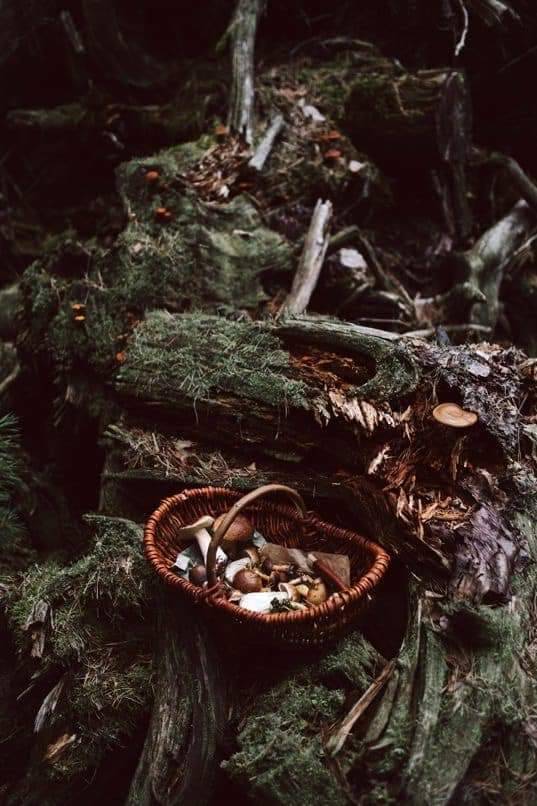

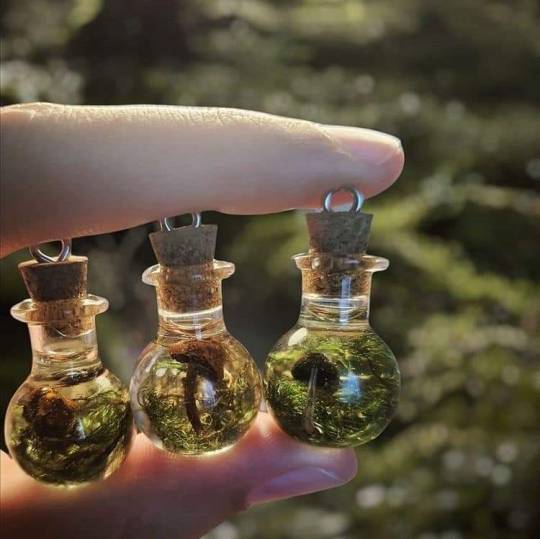
Witchy things.
18 notes
·
View notes
Text

My next Read ♥️🙊
#new books#books#beautiful books#love to read#book worm#book nerd#booklr#bookbir#reading community#reading for fun#reading for pleasure#reading corner#beautiful book covers#The high mountain court#Next read#Storm trooper terrarium#Candles
3 notes
·
View notes
Text
I look online and see all those amazing looking leather/ leather bound journals, but I feel bad because I can’t afford them. Having money would rule because I could support small businesses AND pursue my hobbies more in depth.
In the meantime, I slowly indulge my hobbies and try things, like making my own bound book, making a terrarium (can’t make a terrarium if you live in a concrete jungle….) and making a feather quill at the Ren Faire.

Right now, the pages, which are the recycled wrappings from glass purchases, are being held together with clips. I have no clue what to do from here as far as binding goes….. All the research is overwhelming.
Tonight’s song is Let Me Down Slowly by Alec Benjamin feat. Alessia Cara. I had to break off a 14 year relationship, and I feel gutted. Humanity is weird. Relationships are weird. Emotions are messy. My heart truly hurts, and though I’m not in love with them, I still have love for them, which kind of makes it worse.
#hobbies#moss terrarium#book binding#bookmaking#stuck#i don’t know what to do#relationships are messy#random entry#SoundCloud
3 notes
·
View notes
Text

I got tagged by @kaslynspeaks to try making my blog in this... fishbowl creator?
It's nice! I don't know if anyone else wants to try, but be my guest :)
#I think it's less a fishbowl and more a little terrarium?#I mean. You *could* put fish in there#I just opted to make a little garden since that's what my blog is#And books. Of course I had to add books#tag game
4 notes
·
View notes
Text
All set up in the Setsucon artist alley with a MEGA BOOTH. Stop by and say hi, show off your cosplays, and check out the creature art/books.
#setsucon #setsucon2025 #convention #dealer #artistalley #paintingdragonfeathers #artist #fanart #artistlife #con #writer #diorama #pokemon #pokeball #pokeballterrarium #art #craft #terrarium #cryptozoo #cryptozoobook #cryptids #cryptozoology #writerlife #anime #animecon
#paintingdragonfeathers#art#painting dragon feathers#illustration#fantasy#terrarium#pokemon#diorama#figure#dragon#cryptid#cryptids#CryptoZoo#CryptoZoo book#cryptozoology#Setsucon#setsucon 2025#anime con#anime convention#artist#artist life#writer#writers on tumblr#artist alley
14 notes
·
View notes
Text
*SHRIEKING*!!!!! /pos
I love that so much! I need to check my own version. Where can I find that version?
While I continue to procrastinate on SMS I think y’all need to see the copy of Frankenstein I just bought because I’m OBSESSED with it
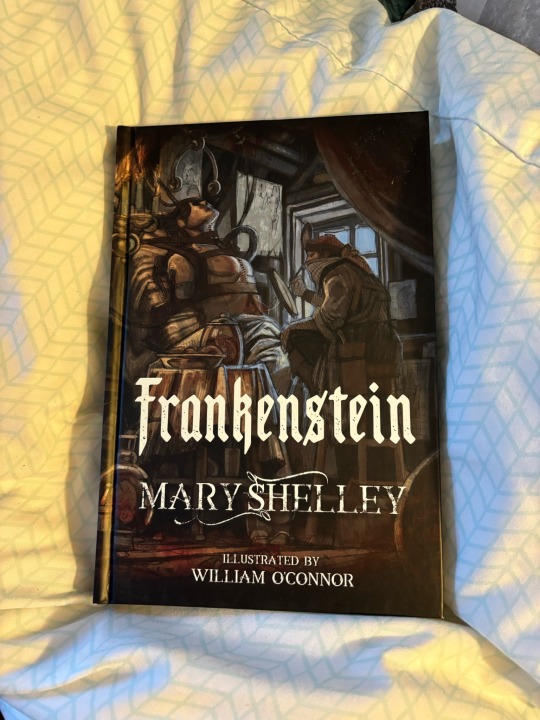
First of all, gorgeous cover art.
Then you get to the actual PAGES, and
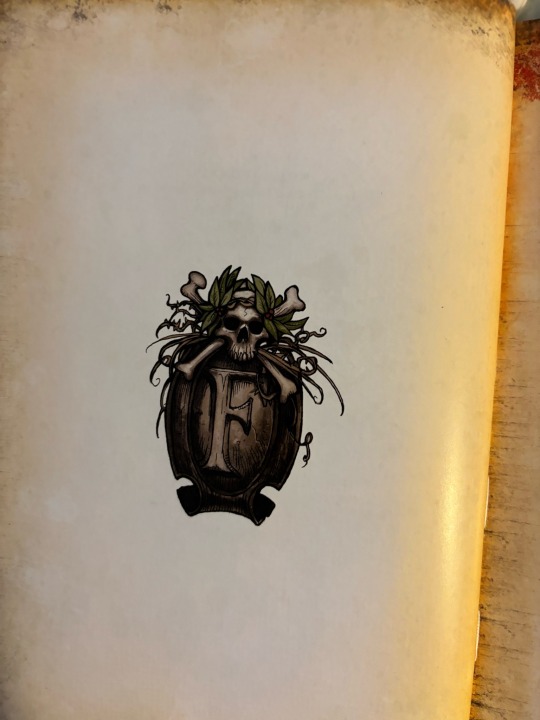

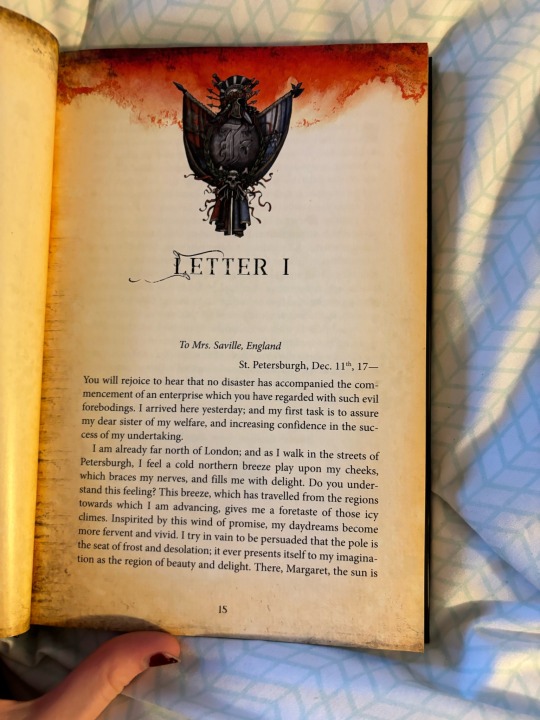
LOOK AT THAT

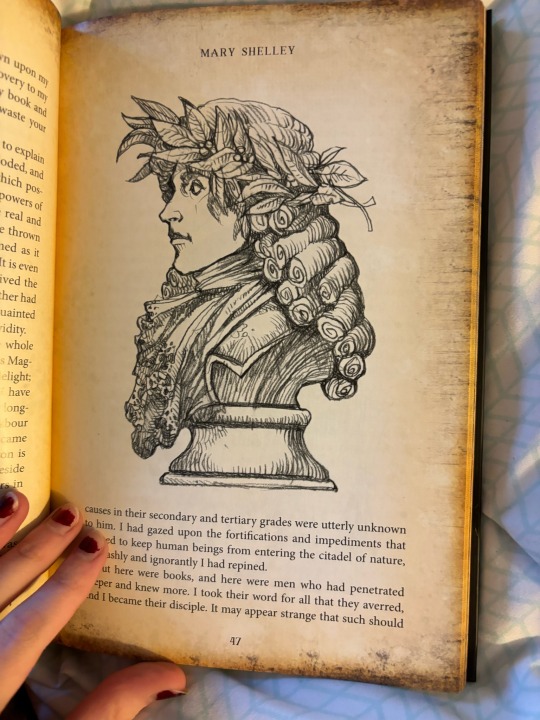
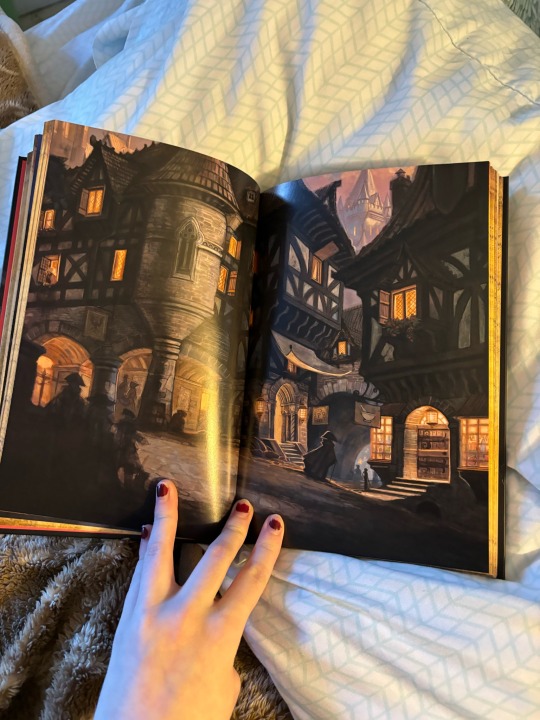
IT’S SO GORGEOUS

THIS LOOKS LIKE IT COULD BE FROM PHANTOM OF THE OPERA


THE CREATURE LOOKS SO FUCKING COOL RAAAAHHHH
#decorating the terrarium#frankenstein#frankenstein book#frankenstein or the modern prometheus#the artist is william o’connor btw
2K notes
·
View notes